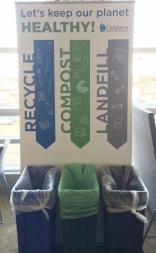
 So said my niece Alice as we were planting a tree in memory of her cousin, Finley. Now I’m not one to argue with a 4 year-old with a romantic streak, but I’d put it differently, if more prosaically: where there is dirt there is life. No dirt, no plants, no food – no us. But dirt gets little respect. Until our language loosened up in the 1960s, “dirty” was the 4-letter modifier of choice: dirty liar, dirty rat, dirty dog, dirty deed. Today the word seems quite mild, even quaint, but there is still a huge phobia of dirt.
So said my niece Alice as we were planting a tree in memory of her cousin, Finley. Now I’m not one to argue with a 4 year-old with a romantic streak, but I’d put it differently, if more prosaically: where there is dirt there is life. No dirt, no plants, no food – no us. But dirt gets little respect. Until our language loosened up in the 1960s, “dirty” was the 4-letter modifier of choice: dirty liar, dirty rat, dirty dog, dirty deed. Today the word seems quite mild, even quaint, but there is still a huge phobia of dirt.
Dirt – the kind you dig in – is nothing more than decayed organic matter. Leaves fall in autumn, and by the next year they have been miraculously transformed into a rich soil in which the tree’s seeds can germinate and grow. All kinds of organic material can decompose into soil, including food scraps and paper. By composting, organic waste becomes dirt; what is useless becomes useful. As the saying goes, one person’s trash is another’s treasure.
Which is why I am excited that Children’s Hospital of Wisconsin just became the first hospital in the Milwaukee area to begin composting its food waste. Starting in our Seven Sisters café, we will collect unused and uneaten food, paper goods, and compostable food containers. Our partner is Compost Crusader, a local company that picks up compostable waste and turns it into fertile soil. It’s a perfect example of the triple bottom line: less waste, better health, lower cost. Here’s why:
- When organic matter goes to the landfill, it decomposes anaerobically, generating methane, which is a greenhouse gas 20 times more potent than carbon dioxide. Composting avoids this major contributor to climate change
- When compost is applied to gardens and farms it reduces or eliminates the need for chemical fertilizers, which are expensive and environmentally hazardous
- In part because the compost product can be sold, having food waste removed separately for composting is less expensive than including it in our usual waste stream. At CHW estimate we will save several thousand dollars annually.
Americans generate an estimated 133 billion pounds of food waste easy year. (No, that’s not a typo.) This is almost 1/3 of all the food produced. Composting can have an enormous positive impact not only on our environment, but ultimately on our health. So far with our trial we are on track to compost over 10 tons of food waste per year.
Undoubtedly some people will be a bit squeamish about something as dirty-sounding as composting. But think about it: how much worse is your uneaten pizza crust or unpopped corn kernels in a separate bin than mixed in with everything else? I’ve been composting at home for decades and if anything, it’s tidier than having unsorted trash.
So when you see the new compost bins and signs, go ahead and pitch in! We’re starting in one area to get out the kinks, with hopes to eventually expand to all of our food service areas. It’s better for the earth, better for Children’s, and ultimately better for children. As Alice would say, go ahead and create some love.
Congrats to CHW for composting! and loving dirt!–I had a Nana who always said “dirt to dirt” (I think she was meaning “dust to dust”) and always said we had to eat a peck of dirt before we died. She was a farmer who was very practical.
Embracing the dirt!!
Great news! How will the “new” dirt be used? May I get some for my flower pots? I think it will be helpful for users to see actual numbers once we are up and running, eg: savings in $ on disposal, amount of dirt produced.
We will definitely be monitoring and providing updates. As far as getting the compost, Compost Crusader sells it through their Web site
Thanks!